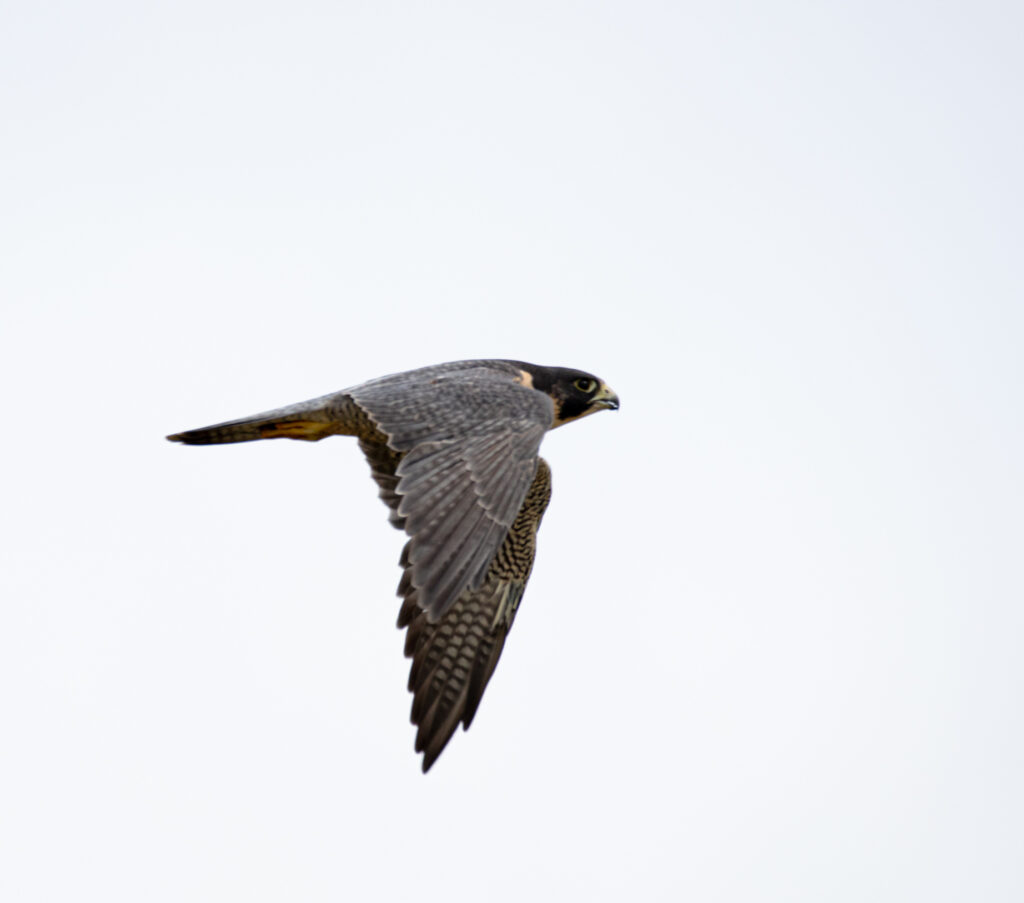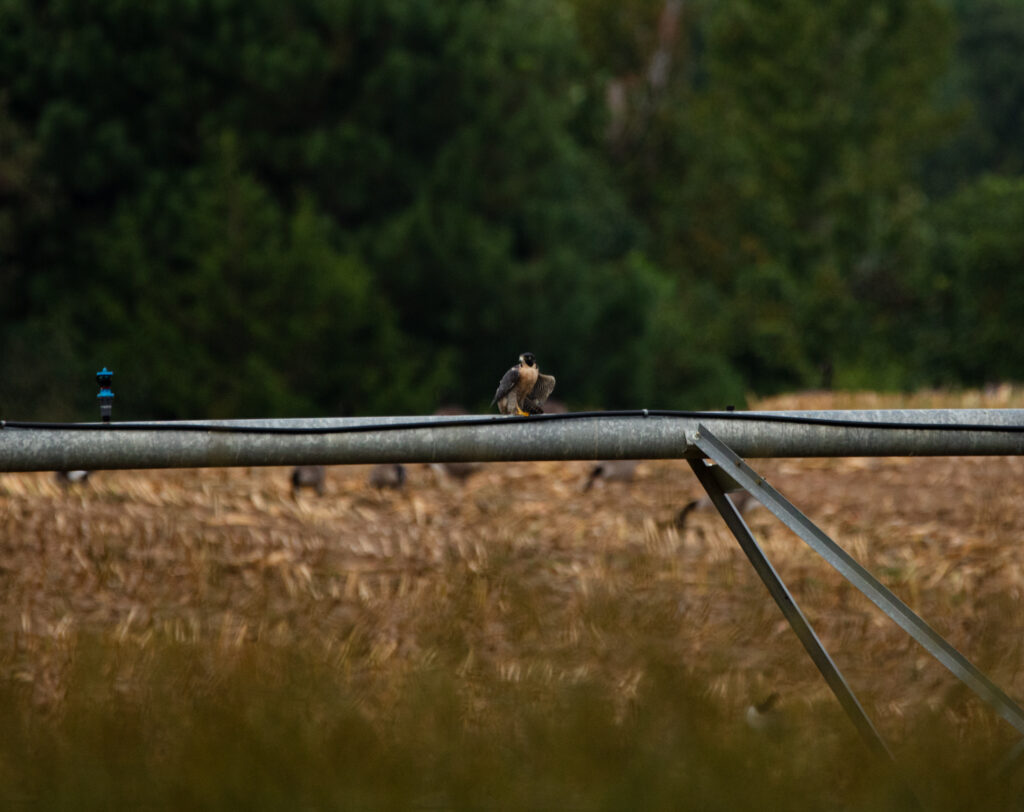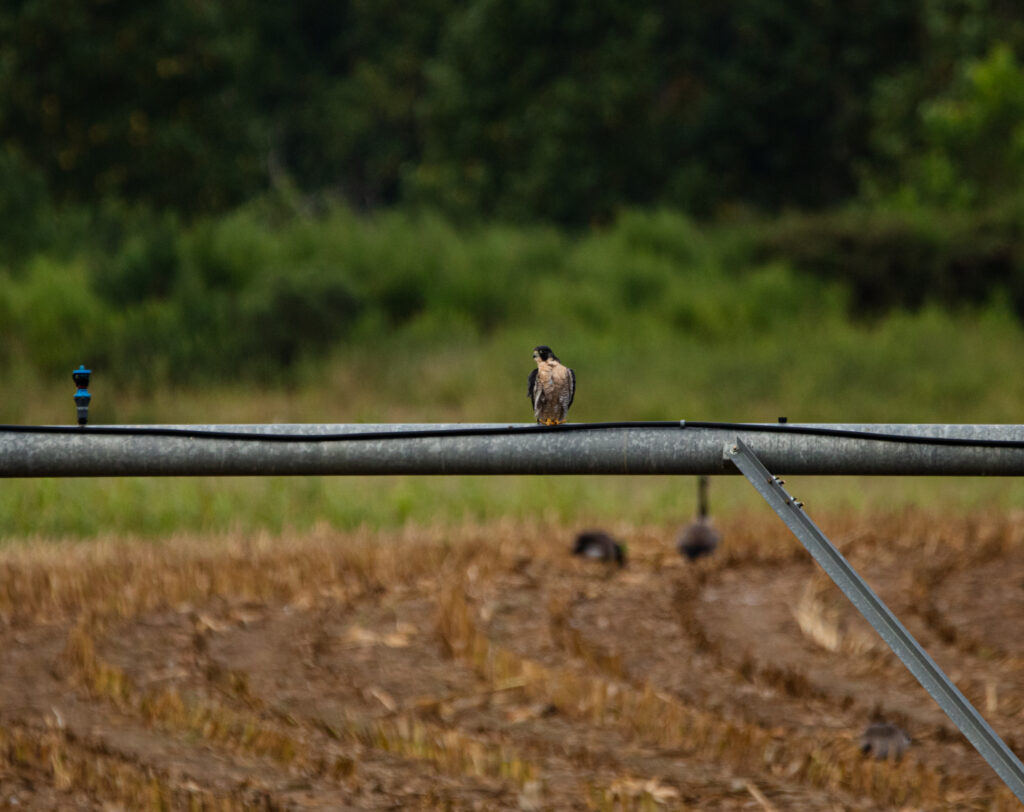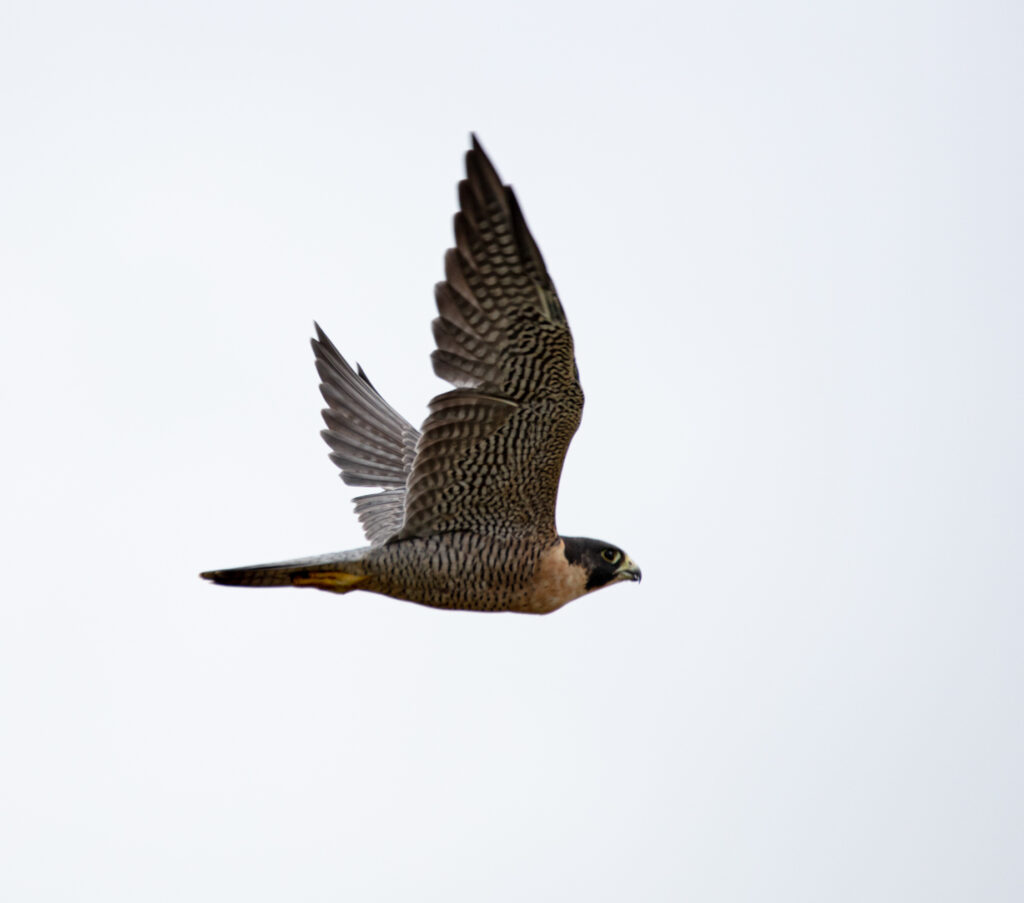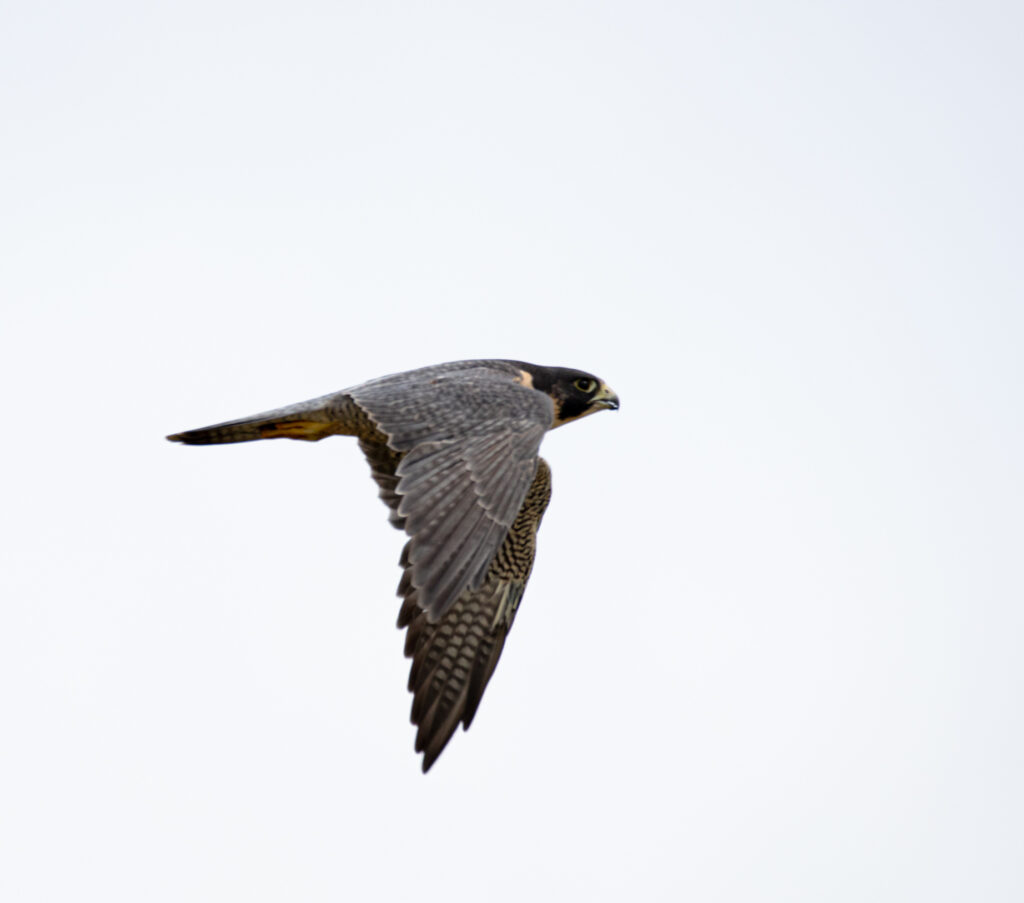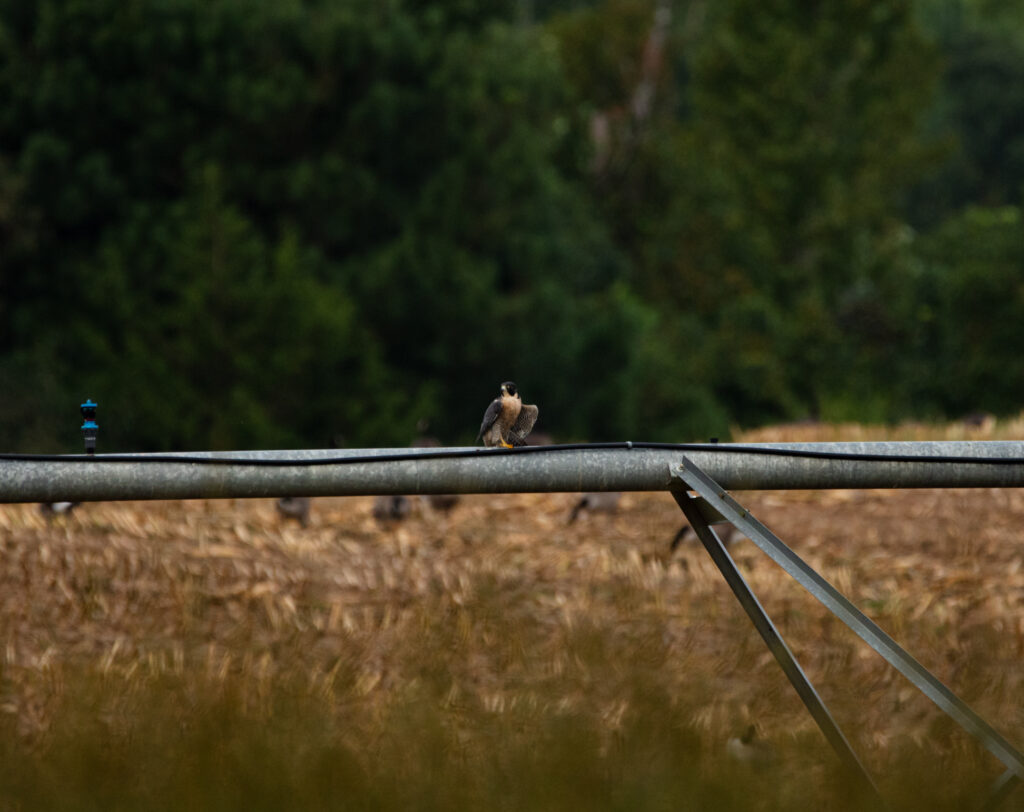One of the most impressive birds we’ve got flying around North Carolina is the Peregrine Falcon.
I haven’t seen many over the years but was lucky to spot three of them last week while birding in eastern NC.
It was really neat to be able to observe this large falcon in the wild as they tend to be a bit skittish.
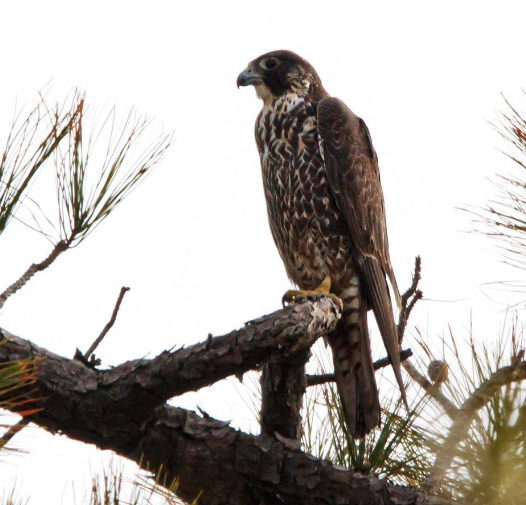
With long pointed wings and a tapered body, Peregrine Falcons are built for speed.
And speed is required since their favorite food consists of songbirds, pigeons, ducks and shorebirds nearly all of which are caught on the wing in midair.
While hunting, the Peregrine will fly high above their prey, and cruise the thermals in search of a likely target. When they spot something to eat down below, they’ll fold their wings tightly against their body and perform a hunting stoop.
Like a dart to a bullseye, this hunting stoop is a high speed dive, during which they can reportedly reach speeds up to a blistering 242 miles per hour!
The impact of the falcon on it’s prey is usually enough to stun it as the raptor locks it’s talons into the body of it’s quarry at moment of strike.
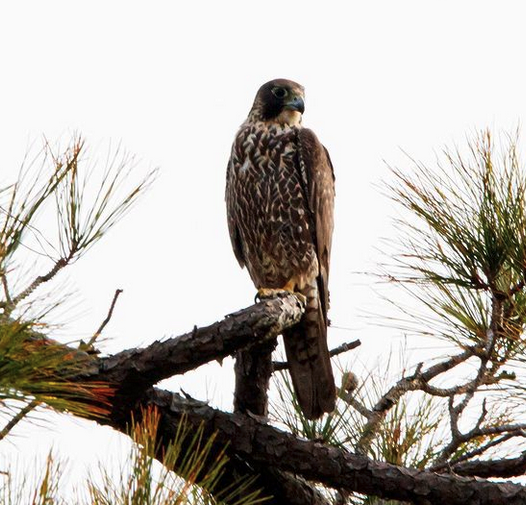
Peregrine Falcons are found across the state of North Carolina. They are permanent residents of western NC, transient visitors to the Triangle and wintertime regulars in our coastal regions (especially on Bodie & Pea Islands).
Yet, another unique characteristic of Peregrines is that they are quite adaptable with choosing the territories they inhabit.
Their preferred habitats are in the mountains where they may be observed nesting on the cracks and crevasses of sheer cliff faces.
That being said, Peregrines are showing up in downtown cities across the United States where they’ll nest on the ledges of tall buildings and feed on a steady diet of pigeons, starlings and sparrows which are plentifully found in urban areas.
Photos by @sally_siko of @birdwatching_nc on my beloved 50MP beast, the @canonusa #5Ds

